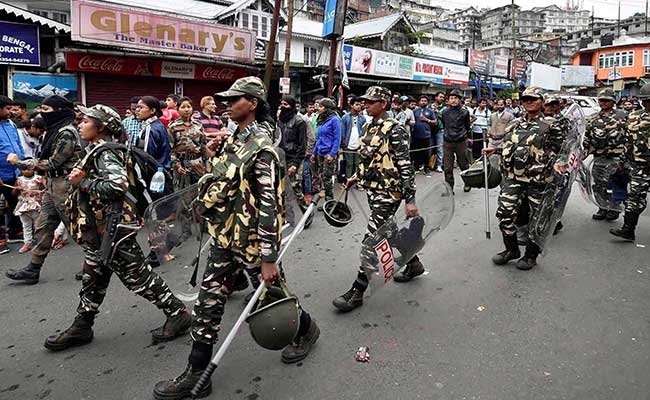The top conservation body UNESCO has cautioned that the damage caused to the Darjeeling Himalayan Railway or DHR due to the protest to demand a separate Gorkhaland state may put in peril the World Heritage Site tag it earned in 1999. Two stations, Gayabari and Sonada, were torched while an arson attempt was made on Elysia Building, the headquarters of the DHR, during the strike that entered the 53rd day on Sunday.
“The DHR heritage toy train is already vulnerable given the natural environmental surrounding and landslide and other disaster threats it faces. And, now this social turmoil has added another layer of vulnerability to it,” said Moe Chiba, Section Chief and Programme Specialist for Culture at UNESCO’s New Delhi office.
“We are very worried about the DHR as after the UNESCO tag, it is a heritage symbol of outstanding universal value. And with all the damage caused to it during the strike, the World Heritage status enjoyed by it may come up for review in the next World Heritage Committee meeting in 2018,” she said.
Indian Railways and UNESCO are working on a plan for the DHR, work on which had begun in mid-2016. An office to implement the plan was set up comprising a team of experts at Kurseong Station, which was built in 1896, and falls midway on the 88-kilometre-long narrow-gauge railway network between New Jalpaiguri and Darjeeling.

The agitation in Darjeeling and nearby areas has stopped the project in the hill town and UNESCO has opened a temporary office for it at its headquarters in New Delhi. “Around June 8, the stir began in Darjeeling and we continued for a few days but finally, the situation became difficult and on June 12, we closed our project office in Kurseong,” Chiba said.
“We evacuated our staff and asked them to go back to their hometowns and work from there and later set up an office at the UNESCO office in Chanakyapuri,” she said. “As soon as the area is made accessible, our team will visit Darjeeling to assess the extent of damage caused to this World Heritage site”.
Delhi-based conservation architect Aishwarya Tipnis, who is a member of the renovation team, said DHR was inscribed in the UNESCO list 20 years ago, and it is “Asia’s first industrial heritage site to earn the coveted tag”.
“DHR is a complex cultural landscape, which impacts the everyday life of a large population. And, the unfortunate events of deliberate damage caused by arson attacks on Sonada, Gayabari stations and Elysia brings to light an important question regarding the protection of World Heritage sites in conflict situations in our country,” Tipnis said.
After DHR, the Nilgiri Mountain Railway and the Kalka-Shimla Railway were given the UNESCO tag, and the three have been collectively designated as the Mountain Railways of India. The only other railway property which enjoys the World Heritage Site status in India is Victoria Terminus (now Chhatrapati Shivaji Terminus) station in Mumbai.
“The objective of the conservation project is to provide a framework for management of the World Heritage Site with the stakeholders – the railways, local administration, civic bodies, NGOs, tour operators – and people in general and an idea to collaboratively work towards its preservation and development by defining roles and responsibilities,” Tipnis said.
According to the architect, if the DHR model of preservation goes as it is being planned, it will become a “yardstick of conservation” for various other projects in the field.
Feature image source: West Bengal Tourism

















